| basic morphology of bdelloids: the head |
The anterior part of rotifers consists of 3 pseudosegments, the first two of these are called rostrum. The rostrum is used for attaching to the substrate and thus for locomotion while "creeping". There are also sensory (tactile and chemical) cilia in the rostrum. The 3rd pseudosegment is the head sensu stricto and -while creeping- contains the trochal columns. When feeding the trochal columns are protruded; this rotatory organ is then called corona.
|
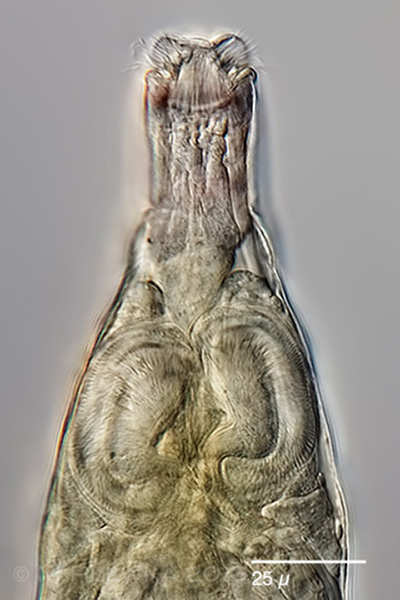  |
left image: head of a creeping Rotaria citrina with rostrum lamella (arrowheads; 1st pseudosegment), cilia (Ci) and rostrum (2nd pseudosegment). The trochi (Tr), i.e. trochal discs and trochal columns are in the head (3rd pseudosegment).
Right: head with extended/ protruded corona. Some bdelloid rotifers of the genus Rotaria have red rostral eyespots (also faintly visible in the left image) |
| |
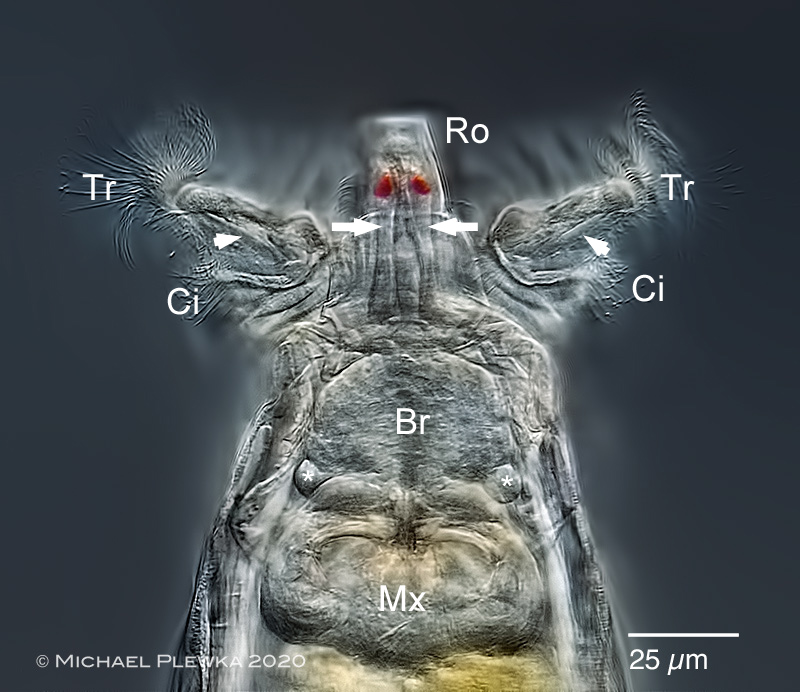 |
| Rotaria macrura, whirling, dorsoventral view of anterior part, focus on the head and rostrum. The arrows point to the ??ciiated nerve cells?? which are attached to the red eyespots and have light sensory function. Br: brain; Ci: cingulum; Mx: mastax with trophi; Ro: rostrum; Tr: trochi; asterisk: possibly subcerebral glands; arrowheads: retractor muscles of the trochal discs. |
| |
 |
| Another rotaria species: Rotaria rotatoria, lateral view of the head while ceeping with retracted corona |
| |
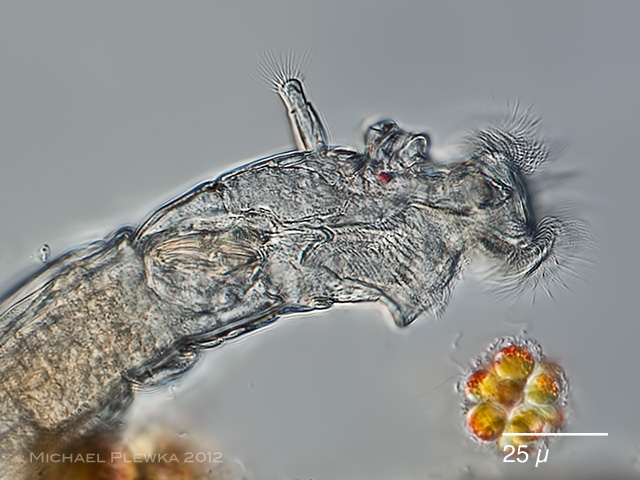 |
| The same species (Rotaria rotatoria), head while feeding with extended corona in lateral view. While in some species the rostrum keeps the frontal position while whirling/ feeding (see R. macrura above, in most bdelloi rotifers and also here the rostrum is bent backwards to a approx. perpendicular position to the longitudinal axis. |
| |
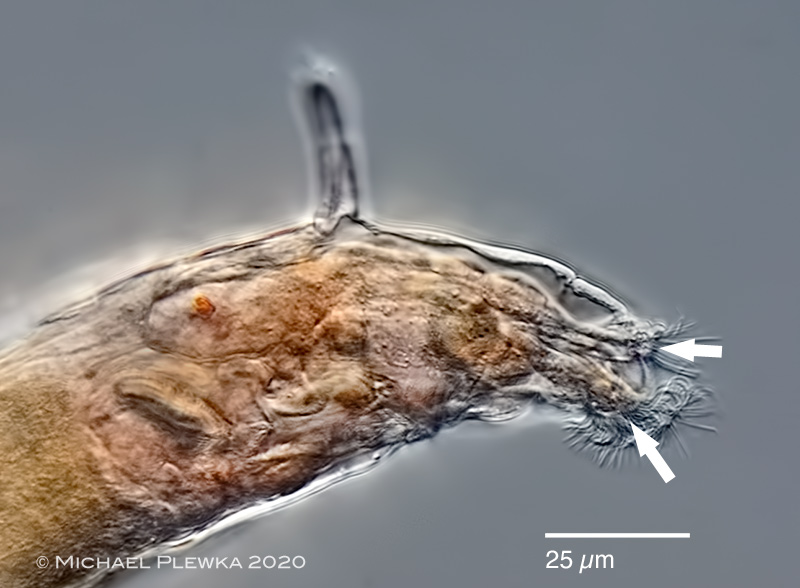 |
| Lateral view of the head of Philodina acuticornis shows two different locations (arrows) of cilia in the rostrum |
| |
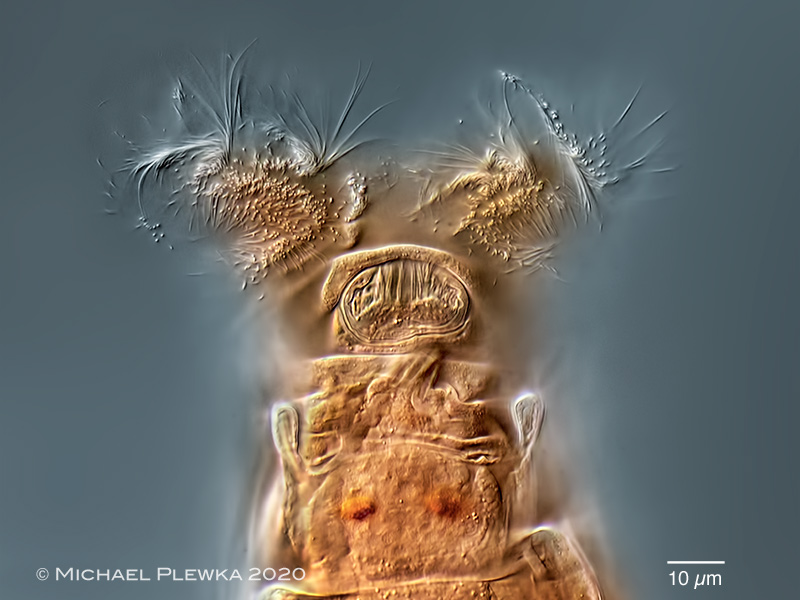 |
| Dorsal view of the head of a Philodina-species; focus plane on the retracted (and thus perpendicular aligned) rostrum. Many Philodina species have cerebral eyespots like the specimen presented here. |
| |
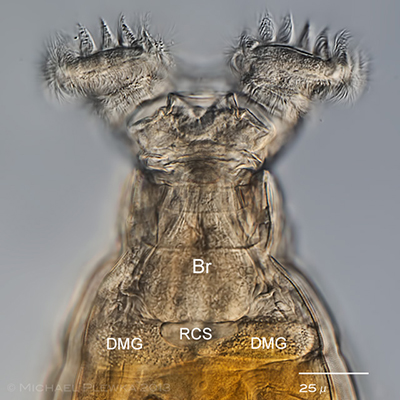 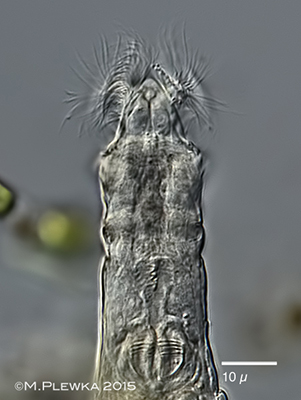 |
| In some genera the corona is very wide (for example Mniobia, here: Mniobia magna, left image) or smaller than the cingulum of neck region, for example Habrotrocha, here: Habrotrocha reclusa (right image) So the corona width is an important trait for species identification. |
| |
| |
| |
| trochus and cingulum |
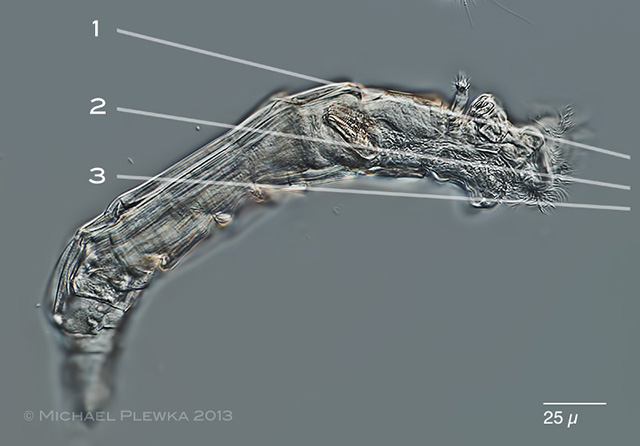 |
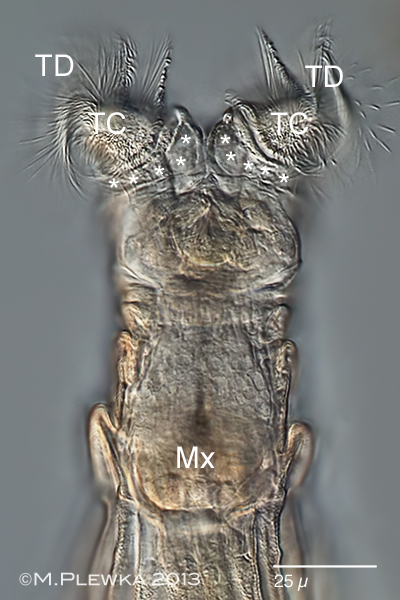 |
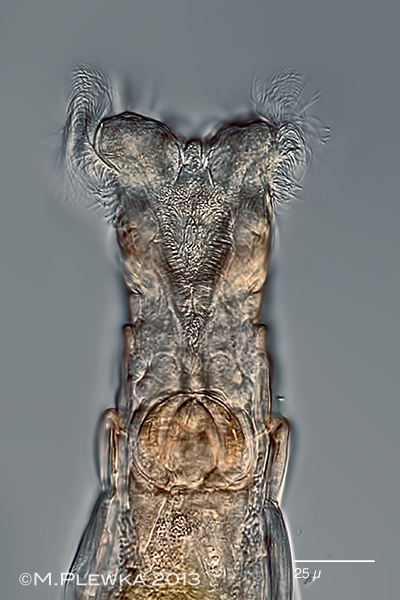 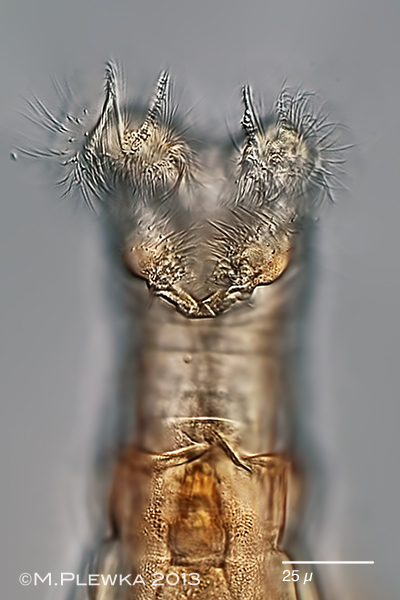 |
Depending on the focal plane of the microscope results in very different aspects / optical sections of the anterior part. This is demonstrated by the above images of Macrotrachela plicata: the 1st image ( longitudinal optical section in lateral view) illustrates the focal planes of the next 3 images.
The next image of a dorsal view in focal plane (1) shows the ciliated trochal disks (TD) on top of the trochal columns (TC). The base of the cilia is a ring of hypodermis cells called trochus. The band which is marked by asterisks is the cingulum, in bdelloid rotifers of the family Philodinidae the dorsal part is called upper lip (purple in the following image).
The next image of a dorsoventral view in focal plane (2) shows the ciliated buccal field and buccal tube that yields in the mastax.
The next image of a ventral view in focal plane (3) shows the ventral part of the ciliated cingulum which is called lower lip. |
| |
| The upper lip in the head of bdelloids is closely related to the cingulum. |
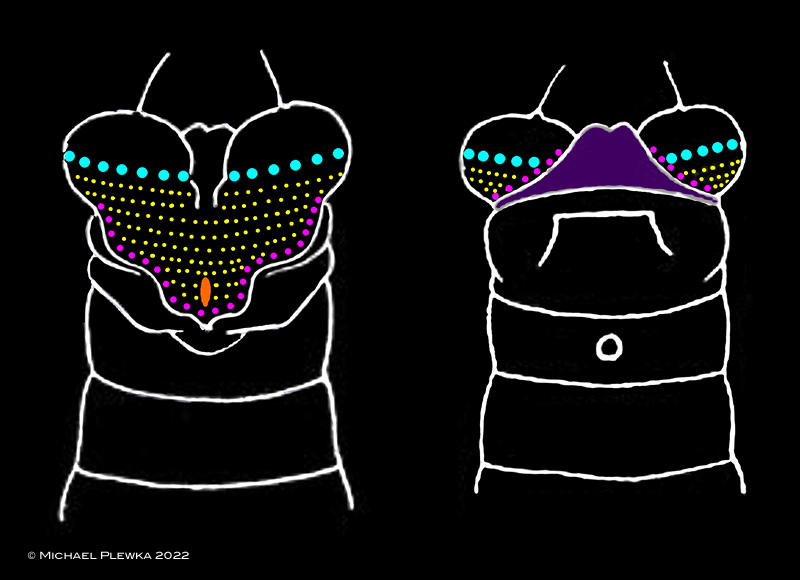 |
| Schematic diagram of the corona of a bdelloid rotifer of the order Philodinida. left: ventral view; right: dorsal view. Cyan dots: cilia of the trochus; magenta dots: cilia of the cingulum; yellow dots: cilia of the circumapical band/ buccal field; orange: mouth. The upper lip on the dorsal side is marked purple. |
| The upper lip is a fold of the integument and is formed very differently in certain species and is therefore a very important trait for species identification. |
| Here are some examples: |
|
| |
| to be continued..... |
| |
| |
|
|
|
| |